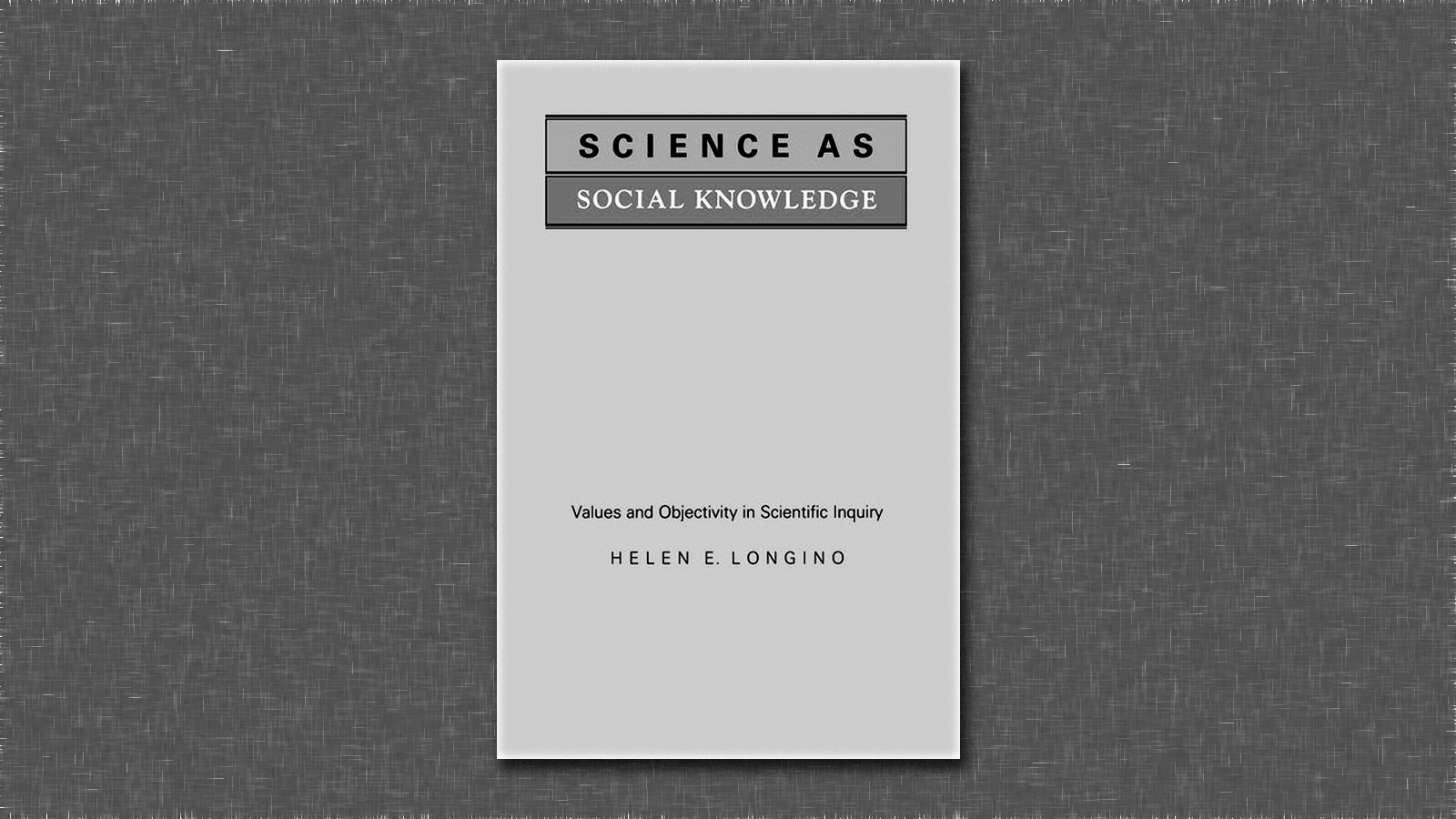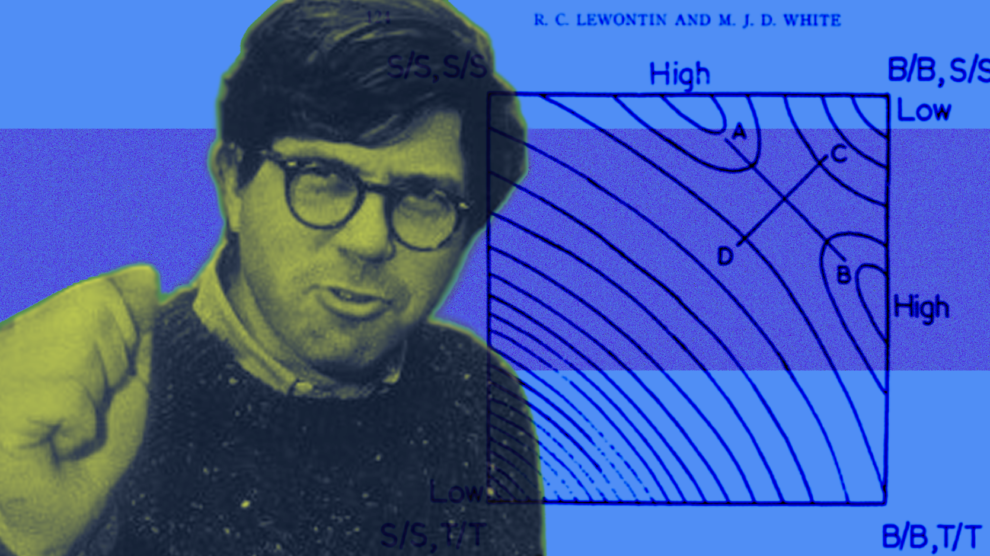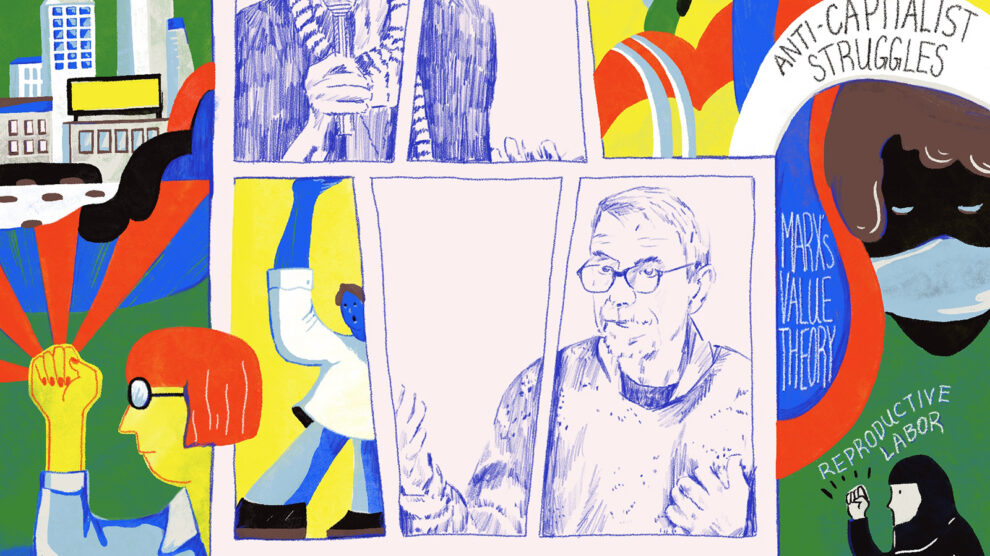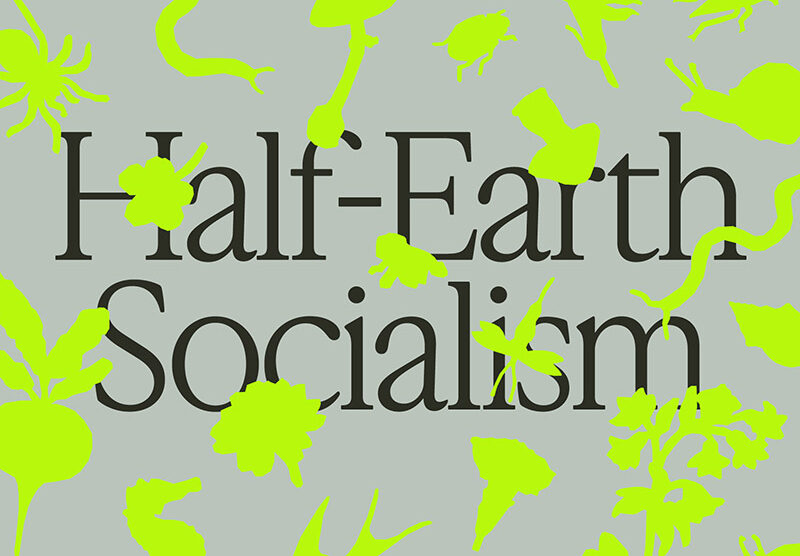The Deep Sociality of Science
Understanding Science as a Cooperative Process
By Jessica A. F. Thompson
Volume 24, no. 3, Cooperation: Theory and Practice for the Commons

Over 30 years ago, Helen Longino published Science as Social Knowledge: Values and Objectivity in Scientific Inquiry. Its argument has lost none of its relevance for readers seeking to navigate the turbulent waters of the “science wars” in academia and in popular culture. This important text reconciled the desire for a principled reason to trust the products of science with the acknowledgment that observation is theory-laden and that values have unavoidable influences on scientific inquiry.1 Longino’s solution to this apparent paradox relies on understanding science as a cooperative social process. The theories and recommendations in this text have broad-reaching implications for how we do science, how we understand the relationship between science and society, and how we communicate scientific results to the general public. In a world that continues to be plagued by the undesirable extremes of destructive mistrust of science and blind scientism, it seems we have as much to learn from Longino today as we did three decades ago.
What distinguishes good science from bad science and what role do values play in such assessments? One view, which Longino associates with logical positivists and the “integrity of science” thesis, holds that (good) scientific practices are not influenced by social or cultural values. Trust in the products of science is grounded in a particular methodology which, when carried out by a rational, impartial scientist, is guaranteed to produce objective facts. To the extent that social or cultural values have corrupted a scientist’s reasoning, the scientist is engaged in bad science. Alternatively, the social constructionist perspective argues that science is inherently social and inescapably value- and interest-laden. As such, scientific knowledge is socially constructed and hence always relative to a particular social and cultural context. Thus a scientist being corrupted by values is not indicative of bad science because all observation is value-laden and all scientists exist in a particular social context. This relativism limits the grounds upon which the social constructionist can criticize science, where the corrections amount to ensuring that science reflects the “right” values, e.g., if we want less racist science, we need scientists who are less racist. In Science as Social Knowledge, Longino gives us a third option: critical contextual empiricism.
The way that background assumptions influence scientific inference is central to Longino’s contextualism. She argues that there is no objective, internal, logical, theory-neutral way of determining whether some data constitute evidence for or against some hypothesis. The same state of affairs can be taken as evidence for opposing hypotheses by scientists with different background assumptions. An evidentiary relationship acquires its status as such only in light of a particular set of background assumptions. While this conclusion paints a bleak picture for the prospect of individual scientific objectivity, it lays the groundwork for understanding scientific objectivity as being the result of social processes.
While it may be impossible to completely eliminate the influence of contextual values, we can organize our scientific communities to control them and make them explicit. According to Longino, scientific objectivity is achieved through critical discourse and scrutiny of the background assumptions that underlie scientific inferences. This view reflects a deep or constitutive sociality of science. It is not merely incidental that science occurs in a social context and has social consequences. Rather, the fact that science is a collaborative, social process is part of what makes science, science. The ability to acquire scientific knowledge is endowed not to individual scientists but to scientific communities. Heterogeneous scientific communities have greater potential for objectivity due to their diverse background assumptions, which better enable them to recognize, scrutinize, and modify such assumptions. This highlights the role of critical discourse in scientific progress and the need for equitable science communities.
Longino describes four norms of critical contextual empiricism which detail the criteria that must be met for a community to experience the transformative effects of critical discourse:
- There must be established venues for criticism
- The criticism must refer to shared, public standards
- The community must be sensitive to criticism
- Intellectual authority must be distributed equally among qualified practitioners
These norms reflect that criticism alone is not enough; the criticism must refer to some shared goals or values, it must be valued, and the scientific community must be sensitive to it. Criterion 4 says that a particular set of assumptions should not be protected (or threatened) due to the political power (or lack thereof) of its adherents. The historical exclusion of certain gender, racial, and ethnic groups from science is an example of a violation of criterion 4.2 According to this view, good background assumptions are those that have survived scrutiny in a healthy scientific community, one that satisfies the above norms.
When we view science as fundamentally a cooperative social process, the benefit of a plurality of approaches and innovative explorations becomes evident.
Even though logical positivism has largely been abandoned by philosophers, the myth of science’s value neutrality permeates contemporary mainstream views on science, epitomized by the popular saying, “facts don’t care about your feelings.”3 This myth of value neutrality renders invisible the background assumptions that facilitate scientific inference, leading instead to the enshrinement of mainstream values in scientific practice. This myth disempowers scientists and lay consumers of science alike, who cannot easily criticize the ways in which interests shape inquiry when such interests are hidden. Lay consumers who see past this myth may lose trust in the products of science.4 Groups whose interests are not reflected in mainstream science may feel that this science cannot serve them. Alternatively, some consumers may double down on the myth of value neutrality to protect it from criticism, leading to a kind of scientism.5
Longino observes that critiques of racist and sexist science often try to “have it both ways,” mixing the rationalizations behind both the social constructionist and integrity of science approaches. This still rings true of popular recent criticisms as well.6 The deep sociality of science provides an alternative and underexplored lens for scientific criticism. Longino shows us how we can acknowledge the ways that values influence scientific knowledge without it resulting in unbridled relativism. The Indigenous scientist doesn’t need to leave her Indigenous epistemology and ethics at the door.7 The feminist scientist and the patriarchal scientist can equally acknowledge how their ideologies influence their framing and interpretation of data. When these assumptions are made visible and contested, their replacement with alternative assumptions can lead productively to new ideas. The collaborative social process of subjecting these diverse background assumptions to scrutiny is what will make the knowledge that comes to be accepted by a scientific community objective. Thus, efforts to broaden participation in science, which diversify the values and interests represented in a scientific community, can be seen as increasing its capacity for objectivity.
The theories presented in Science as Social Knowledge and the contemporary views it has inspired should be attractive to those who acknowledge the myriad ways that social and cultural values impact scientific results, while also believing in some form of scientific objectivity. When we view science as fundamentally a cooperative social process, the benefit of a plurality of approaches and innovative explorations becomes evident. This work suggests interventions at the levels of how science is taught and how we organize our scientific communities. Contemporary research and scholarship inspired by Longino propose that “[e]ducational measures should highlight the social and conversational nature of scientific knowledge production, because these concepts lay the foundation for learners’ and citizens’ abilities to build an informed trust in science and, in turn, actively engage in a science-based society.”8 To enable positive interactions between science and society, scientists, science communicators, and activists must take Longino’s lesson to heart: it takes a good society to do good science.
Science as Social Knowledge: Values and Objectivity in Scientific Inquiry
Helen Longino
Princeton University Press
1990
262 pages
This article is part of our Winter 2021 issue: Cooperation. We will gradually post articles online in the coming months. Subscribe or purchase this issue to get full access now.
Notes
- Despite Longino’s major contribution, Science as Social Knowledge is undervalued in philosophy of science. The work is often only mentioned in the context of “Feminist Philosophy of Science” or “Feminism and Social Studies,” areas that are not prioritized in introductory texts and courses in philosophy of science. Although the case studies Longino analyzes are related to feminist issues, the theoretical contributions are general to all science and should be recognized as such. See Peter Machamer and Michael Silberstein, eds., The Blackwell Guide to the Philosophy of Science (Blackwell Publishers, 2002); Peter Godfrey-Smith, Theory and Reality: An Introduction to the Philosophy of Science (Chicago: University Of Chicago Press, 2003).
- I similarly summarize Longino’s norms of critical contextual empiricism. See Jessica A. F. Thompson, “Forms of Explanation and Understanding for Neuroscience and Artificial Intelligence,” Journal of Neurophysiology 126, no. 6 (2021): 1870–74, https://doi.org/10.1152/jn.00195.2021.
- Ben Shapiro, Facts Don’t Care About Your Feelings (Creators Publishing, 2019).
- Ava Kofman, “Bruno Latour, the Post-Truth Philosopher, Mounts a Defense of Science,” New York Times Magazine, October 25, 2018, https://www.nytimes.com/2018/10/25/magazine/bruno-latour-post-truth-philosopher-science.html.
- Kamil Ahsan, “The New Scientism,” Jacobin, August 5, 2014, https://www.jacobinmag.com/2014/08/the-new-scientism/.
- For example, Angela Saini’s popular books on gender and race science skillfully trace the history of these disciplines. Her criticisms often seem to reflect the social constructionist perspective, acknowledging how scientific results are influenced by self-interest and contextual values and advocating to reduce the power and influence of racist scientists, while other times supporting the “integrity of science” thesis—that the research questions posed have objective answers that can be discovered by rigorous science conducted by unbiased scientists. See Angela Saini, Superior: The Return of Race Science (Boston: Beacon Press, 2019); Angela Saini, Inferior: How Science Got Women Wrong and the New Research That’s Rewriting the Story (Boston: Beacon Press, 2017).
- For example, in Braiding Sweetgrass, Robin Wall Kimmerer discusses her experience as an Indigenous biologist. She faces challenges and skepticism in her scientific community, but ultimately successfully marries her Potawatomi identity with her scientific work, which leads to innovative research that benefits local communities. See Robin Wall Kimmerer, Braiding Sweetgrass (Minneapolis: Milkweed Editions, 2015).
- In Why Trust Science?, Naomi Oreskes discusses how the social character of scientific knowledge is the source of its trustworthiness. See Naomi Oreskes, Why Trust Science? (Princeton: Princeton University Press, 2021). See also Dorothe Kienhues, Regina Jucks, and Rainer Bromme, “Sealing the Gateways for Post-Truthism: Reestablishing the Epistemic Authority of Science,” Educational Psychologist 55, no. 3 (2020): 144.





